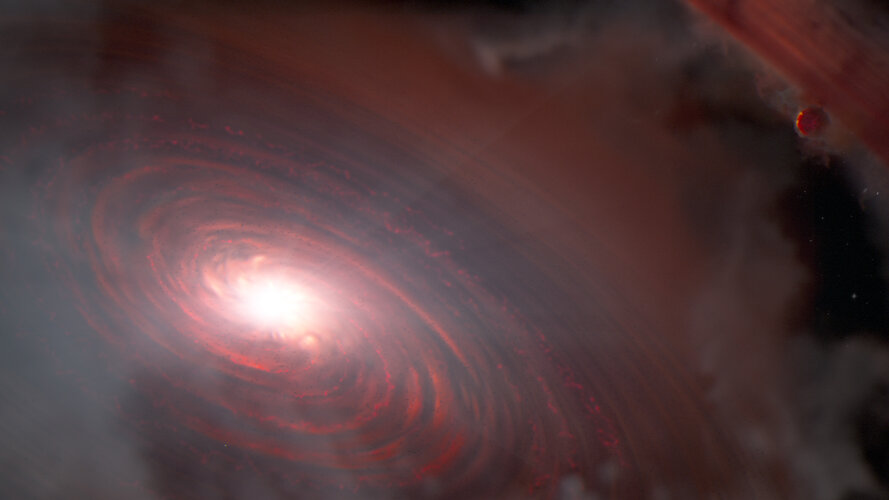
Astronomers haven’t yet detected any planets forming within the inner disc of PDS 70. However, they do see the raw materials for building rocky worlds, in the form of silicates. The detection of water vapour implies that if rocky planets are forming there, they will have water available to them from the beginning.
"We find a relatively large amount of small dust grains. Combined with our detection of water vapour, the inner disc is a very exciting place," said co-author Rens Waters of Radboud University in the Netherlands.
What is the origin of the water?
The discovery raises the question of where the water came from. The MINDS team considered two different scenarios to explain their finding.
One possibility is that water molecules are forming in place, where we detect them, as hydrogen and oxygen atoms combine. A second possibility is that ice-coated dust particles are being transported from the cool outer disc to the hot inner disc, where the water ice sublimates and turns into vapour. Such a transport system would be surprising, since the dust would have to cross the large gap carved out by the two giant planets.
Another question raised by the discovery is how water could survive so close to the star, where the star’s ultraviolet light should break apart any water molecules. Most likely, surrounding material, such as dust and other water molecules, serves as a protective shield. As a result, the water detected near PDS 70 could survive destruction.
Ultimately, the team will use two of Webb’s other instruments, the Near-InfraRed Camera (NIRCam) and the Near-InfraRed Spectrograph (NIRSpec) to study the PDS 70 system in an effort to glean an even greater understanding.
These observations were made as part of Guaranteed Time Observation program 1282. This finding has been published in the journal Nature.
More information
Webb is the largest, most powerful telescope ever launched into space. Under an international collaboration agreement, ESA provided the telescope’s launch service, using the Ariane 5 launch vehicle. Working with partners, ESA was responsible for the development and qualification of Ariane 5 adaptations for the Webb mission and for the procurement of the launch service by Arianespace. ESA also provided the workhorse spectrograph NIRSpec and 50% of the mid-infrared instrument MIRI, which was designed and built by a consortium of nationally funded European Institutes (The MIRI European Consortium) in partnership with JPL and the University of Arizona.
Webb is an international partnership between NASA, ESA and the Canadian Space Agency (CSA).
Contact:
ESA Media relations



